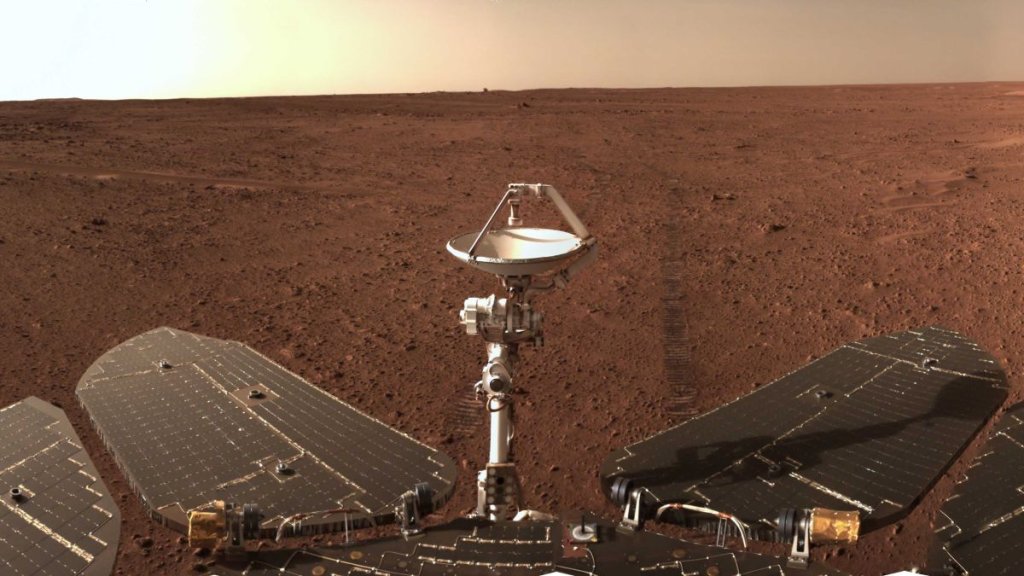
China possibly adding helicopter, 6-legged robot to its Mars sample return mission (Image Credit: Space.com)
New details are emerging about China’s upcoming Mars sample return mission.
An outline of science objectives for the Tianwen-3 Mars mission were shown in a presentation at the International Conference of Deep Space Sciences in Hefei, Anhui province on April 22. The mission overview contained references to a small helicopter similar in design to NASA’s Ingenuity Mars helicopter, currently exploring the Martian surface.
Slides from the presentation shared (opens in new tab) on Chinese social media site Weibo depict a small helicopter-like drone as well as a six-legged robot of some sort, both adjacent to information regarding sample collection for Tianwen-3.
Related: Martian dust likely preventing Chinese rover from waking up
Liu Jizhong, director of China’s Lunar Exploration and Space Program Center and Hou Zengqian from the Chinese Academy of Geological Sciences revealed several key facts about the framework for the Tianwen-3 mission during the presentation. According to the the slides shared on Weibo, sometime around 2030 or possibly as soon as 2028, China is planning a dual launch of its Long March 5 rockets to send two vehicle stacks to Mars. One will include a landing vehicle and a two-stage ascent vehicle, the other an orbiter and return craft.
The lander/launcher combo is designed to touchdown on the Martian surface, collect and store up to 500 grams of material, then launch back to space. Patiently circling Mars in anticipation of the sample return will be the orbiter awaiting rendezvous and sample transfer along with the return vehicle that will store the sample for return to Earth.
The two-stage launch vehicle, which will weigh about 790 pounds (360 kilograms), consists of a solid-rocket first stage and a liquid propellant upper stage, which will rendezvous and dock with its orbital companion using the assistance of the orbiter’s robotic arm. Samples will then be transferred to the orbiter’s return vehicle in preparation for Mars orbital departure and the return journey to Earth.
Presentation slides indicate the mission’s surface sample may be collected using a drill and robotic arm to collect soils from as deep as 6 feet (2 meters) below the Martian surface. It is not clear from the presentation slides if the multi-legged robot or the pictured helicopter would be responsible for that sample collection.
Mobile sampling is also listed as a mission objective, with bullet points outlining criteria for possible landing sites, including evidence of past liquid water, elevation, terrain, geological diversity and the location’s latitudinal positioning making it optimal for Taiwan-3 to return to Martian orbit with its sample.
If the mission launches within China’s 2028 launch window, Martian material from Taiwan-3 would return to Earth in July, 2031. This would beat the schedule currently set for a similar Mars sample return mission being planned by NASA and the European Space Agency (ESA), which is shooting for a 2033 sample return date.
However, the recent Taiwan-3 presentation did not provide the expected launch date included in past Tianwen-3 releases, possibly indicating a delay in China’s expectations for the mission.
Follow us @Spacedotcom (opens in new tab), or on Facebook (opens in new tab) and Instagram (opens in new tab).








